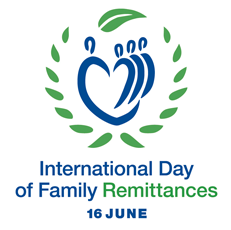Remittances hit record high
Business Recorder
KARACHI: Remittances from workers employed abroad hit the highest level for a single month in July, officials said on Monday, increasing 36.5% year on year, mostly thanks to less spending on Hajj pilgrimages because of the coronavirus pandemic.
The global economic slowdown had raised fears that remittances, key to country’s dwindling foreign exchange reserves, would decline given falling employment in countries from where most of the money is sent – particularly Saudi Arabia and United Arab Emirates.
But July remittances rose to $2.768 billion, the State Bank of Pakistan said, adding the increase was up 12.2% from June, when remittance numbers were also high.
“More good news for Pakistan economy,” Prime Minister Imran Khan tweeted. “Remittances from overseas Pakistanis reached $2768 million in July 2020, highest ever amount in one month in the history of Pakistan.”
Remittances from Saudi Arabia in July amounted to $821.6 million, the United Arab Emirates $538.2 million, the United Kingdom $393.9 million and the United States, $250.6 million.
“Given the impact of COVID-19 globally, this increase in workers remittance is encouraging,” SBP said in a statement.
It added that the growth rate compared to the same month in 2019 was around twice as high because of decreased spending over Eid-ul-Azha season.
“Not much cash movement on flights or Hajj and Umrah pilgrimages has taken place this year. This trend can continue for some months, which is a positive development for the economy,” Saad Hashemy, Executive Director BMA Capital Management, told Reuters.
Pakistan has opened all sectors of the economy in a bid to revive its hard-hit economy. The country has reported 289,215 positive COVID-19 cases of which 269,087 have recovered, with 6,175 deaths. -Reuters
RECORDER REPORT adds: According to State Bank of Pakistan (SBP), workers’ remittances arrived in July is the highest ever level of remittances received in a single month in Pakistan. Given the impact of Covid-19 globally, this increase in worker’s remittances is encouraging, it added.
The growth rate in remittances compared to the same month in the previous year is around twice as high as the Eid-ul-Azha-related seasonality typically experienced over the last decade.
Among three major corridors, most of growth in home remittances witnessed from Saudi Arabia. Inflows from Saudi Arabia surged by 74 percent to $821.55 million in July 2020 up from $471 million in same period of last fiscal year.
Workers’ remittances from the UK posted 32 percent growth and reached $394 million. However, inflows from the US declined 22 percent to $251 million in the first month of this fiscal year.
In July, sizeable amounts of workers’ remittances were also received from the UAE amounted to $ 538.2 million, GCC countries $ 297 million and the EU countries $227 million.
SBP said that several factors have likely supported the growth in remittances to date, including orderly exchange rate conditions and policy steps taken by the State Bank and the Federal Government under the Pakistan Remittance Initiative.
These steps include reducing the threshold for eligible transactions from USD 200 to USD 100 under the Reimbursement of Telegraphic Transfer (TT) Charges Scheme, an increased push towards adoption of digital channels, and targeted marketing campaigns to promote formal channels for sending remittances.
In addition, to improve data quality and better capture the source country of the remitter, the compilation methodology for ‘country wise’ workers’ remittances has been strengthened from this month. Therefore, country-by-country trends will be available on a consistent basis from August 2020 onwards. Importantly, the new data collection method does not affect the reporting of the level of remittances arriving into Pakistan.
Importantly, SBP said that the revised country shares under the improved data do not necessarily imply that remittances from one country have increased over another. Instead they demonstrate that the source country of remittances is being recorded more accurately now


